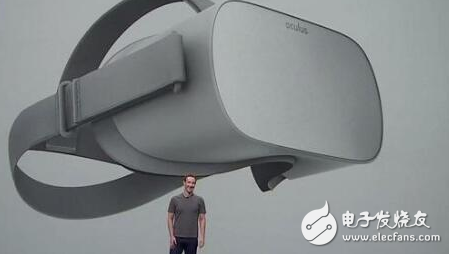For $199, the independent VR helmet Oculus Go can take it away
According to recent reports, Facebook CEO Mark Zuckerberg unveiled a new standalone virtual reality headset called the Oculus Go. Designed with an ultra-lightweight frame, the device features a mesh strap, a foam inner layer for comfort, and a fast-swappable LCD display with a resolution of 2560x1440. It also includes the latest lenses, spatial audio, built-in speakers, a 3.5 mm headphone jack, and a single motion controller. Unlike previous models, the Oculus Go doesn't require any external devices to operate, making it more accessible to a wider audience.
Priced at $199, the Oculus Go is set to launch early next year. While Zuckerberg didn’t go into much detail about the product, he mentioned that it was designed to bridge the gap between mobile VR headsets and more advanced systems like the Oculus Rift. Mobile VR options are affordable but often lack in performance, while high-end devices like the Rift need powerful computers and are more expensive.
Hugo Barra, Facebook’s head of virtual reality, explained that the Oculus Go uses the same lenses as the Rift but has been upgraded with a custom-built display, a wider field of view, and sharper images. This helps avoid the so-called "screen door effect," where users can see individual pixels on the screen, resembling a view through a window.

The Oculus Go comes with built-in speakers, supports Gear VR apps, and includes a dedicated motion controller. Barra emphasized that this is the most user-friendly way to enter the world of virtual reality. He believes that once people experience a standalone device, they will spend more time immersed in VR environments.
In addition to the Oculus Go, Barra announced a new business initiative allowing companies to purchase large quantities of Oculus Rift headsets. For example, German automaker Audi is using Rift devices to enhance customer engagement and showcase their vehicles. Oculus also offers full room-scale VR setups for those looking for a more immersive experience.
Zuckerberg and Barra briefly mentioned the upcoming Oculus Santa Cruz, which is still in development and only exists as a prototype. Like the Go, Santa Cruz is a standalone device that doesn’t require a PC connection. It features inside-out tracking technology, which allows users to move freely without needing external sensors in the room.
Facebook made a $2 billion acquisition of Oculus in 2014, betting big on the future of virtual reality. However, this investment hasn’t delivered the expected returns, unlike other major acquisitions such as Instagram and WhatsApp, which saw massive growth in user numbers and revenue.
According to market research firm Canalys, the Oculus Rift sold less than 400,000 units last year, falling behind competitors like HTC Vive and Sony’s PlayStation VR, which shipped over a million units. Despite this, Facebook remains committed to the VR space, continuously refining its product lineup.
Zuckerberg recently adjusted the price of the Oculus Rift to $399, down from its original $599.99 and later $499.99. The bundled version, including the Touch controllers, now costs just $399. This pricing strategy reflects Facebook’s ongoing efforts to make VR more affordable and appealing to a broader audience.
While Facebook has promoted the idea of social VR, consumer adoption has been slow. Many users still find the platform lacking in essential applications, which limits its overall appeal. However, the VR industry is still in its early stages, and experts predict that the market could reach 20 million headsets by 2020. This gives Facebook a chance to regain momentum and prove the value of its VR ecosystem.
4D Laser Level,Laser Level Standard,Wall Mount Laser Level,Multiple Laser Level
Guangdong Tumtec Communication Technology Co., Ltd , https://www.gdtumtec.com